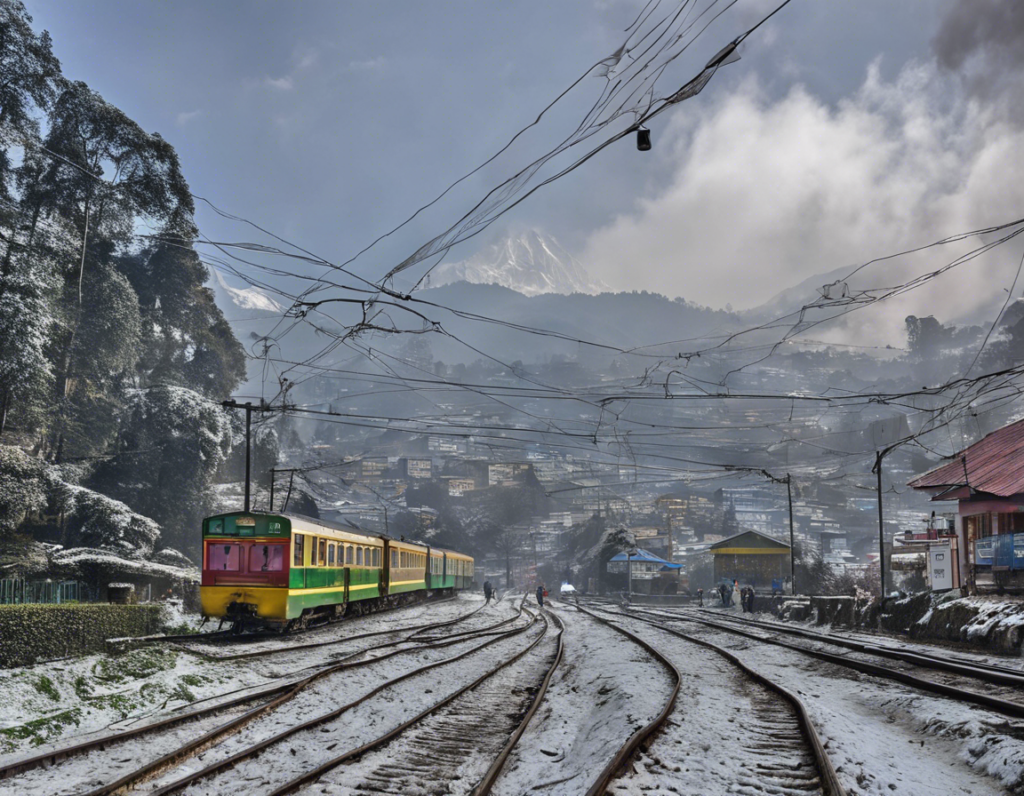Introduction
Nestled in the eastern Himalayan foothills of India, Darjeeling is a hill station renowned for its scenic beauty, tea plantations, and diverse climatic conditions. The region experiences distinct temperature variations throughout the year, making it a fascinating destination for travelers seeking to immerse themselves in nature’s wonders. From the pleasant warmth of summer to the chilly embrace of winter, Darjeeling offers a kaleidoscope of temperatures that cater to different preferences.
Understanding Darjeeling’s Climate
Darjeeling’s climate is greatly influenced by its elevation, with temperatures varying significantly between the foothills and the higher altitudes. The town experiences a subtropical highland climate, characterized by relatively mild summers, cool autumns, cold winters, and wet monsoons. The monsoon season typically lasts from June to September, bringing heavy rainfall that nurtures the lush tea gardens and verdant landscapes of the region.
Seasonal Temperature Patterns
- Summer (March – May)
During the summer months, Darjeeling enjoys comfortable temperatures ranging from 15°C to 25°C, offering respite from the scorching heat prevalent in other parts of India. Travelers can explore the town’s picturesque surroundings, engage in outdoor activities, and savor cups of world-famous Darjeeling tea amidst clear skies and pleasant weather.
- Monsoon (June – September)
The monsoon season in Darjeeling is characterized by frequent rainfall and misty weather. Temperatures during this period hover between 15°C and 22°C, creating a damp and refreshing ambiance in the region. While trekking and outdoor excursions may be affected by the rains, the monsoon brings out the vibrant colors of Darjeeling’s flora, making it a unique experience for nature enthusiasts.
- Autumn (October – November)
Autumn in Darjeeling is truly magical, with temperatures ranging from 10°C to 20°C and the landscape adorned with hues of red, orange, and gold. This season is ideal for witnessing the grandeur of the Himalayan range, embarking on leisurely hikes, and partaking in cultural festivals that showcase the rich heritage of the region.
- Winter (December – February)
Winter transforms Darjeeling into a winter wonderland, with temperatures dropping to 2°C to 10°C and occasional snowfall gracing the higher altitudes. Travelers can cozy up by the fireplace, enjoy stunning views of snow-capped peaks, and indulge in hot beverages to ward off the cold. The crisp winter air adds a touch of romance to Darjeeling, making it a favored destination for couples and nature enthusiasts alike.
Exploring Activities Based on Temperatures
-
Mild Summers: Ideal for tea garden tours, nature walks, bird watching, and leisurely sightseeing.
-
Monsoon Rains: Perfect for exploring local cuisine, visiting monasteries, attending cultural events, and witnessing the blooming of exotic flowers.
-
Autumn Bliss: Recommended for mountain biking, photography expeditions, tea tasting sessions, and attending the Darjeeling Carnival.
-
Chilly Winters: Best suited for enjoying winter sports, visiting heritage sites, experiencing the Himalayan Mountaineering Institute, and relishing hot momos and thukpas.
FAQs (Frequently Asked Questions)
- What is the best time to visit Darjeeling based on temperatures?
The best time to visit Darjeeling depends on individual preferences. For mild weather, consider visiting during the summer months (March to May). For snowfall and winter charm, December to February is ideal.
- Are there temperature variations between day and night in Darjeeling?
Yes, Darjeeling experiences notable temperature fluctuations between daytime and nighttime, with evenings and early mornings being considerably cooler.
- Can I witness snowfall in Darjeeling?
Yes, Darjeeling receives snowfall during the winter months, particularly in higher altitudes like Tiger Hill and Sandakphu.
- How should I dress for different temperature ranges in Darjeeling?
Layered clothing is recommended for Darjeeling, especially during winters. Pack lightweight clothing for summers, rain gear for the monsoon season, and warm woolens for winters.
- Is altitude sickness a concern in Darjeeling due to varying temperatures?
Altitude sickness can be a concern for some individuals, especially at higher elevations. It is advisable to acclimatize gradually, stay hydrated, and seek medical advice if experiencing symptoms of altitude sickness.
In conclusion, Darjeeling’s varied temperatures offer a dynamic experience for travelers seeking to engage with nature, indulge in diverse activities, and witness the beauty of the Himalayas. Whether basking in the summer sun, relishing the monsoon showers, admiring autumnal splendor, or embracing winter’s chill, Darjeeling beckons with its enchanting climate year-round.
